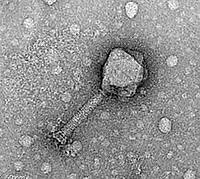Purdue Researchers Use Bluetooth Technology for Innovative On-Site E. coli Testing

Purdue University researchers have come up with a bioluminescence-based assay, coupled with a portable device that works with smartphones and laptops, to perform on-site testing for harmful Escherichia coli in food samples.
The device, known as a silicon photomultiplier, uses low light from the bioluminescent assay to detect the presence of bacteria in food that may cause foodborne illness. The Purdue team also created an electrical circuit with an amplifier, comparator, and microcontroller to send the data to laptops and smartphones via Bluetooth technology. They used 3D printing to design a portable cradle for the silicon photomultiplier.
To show the proof of concept, the Purdue team tested the device with artificially contaminated samples of ground beef from a local grocery store. They injected E. coli into the beef samples and then used their device to analyze the sample within 10 hours of inoculation.
The beef is rinsed and incubated with an enrichment liquid containing a modified phage, a virus for bacteria. The phage then infects harmful foodborne bacteria so that when a substrate is added, the bacteria emit light, which is detected by the SiPM. The device is able to count light pulses or photons.
“Our goal is to create technology and a process that allows for the cost-effective detection of the causes of foodborne illness using an easy, expedient, and efficient process,” says Euiwon Bae, a senior research scientist of mechanical engineering in Purdue’s College of Engineering, who developed the technology along with Bruce Applegate, a professor of food science in Purdue’s College of Agriculture. “This time frame allows for better-integrated detection and quicker action to stop more people from getting sick.”
The U.S. Department of Agriculture Agricultural Research Service and Center for Food Safety Engineering provided funding for the technology research in addition to Hatch Funds, which support agricultural research at land-grant institutions across the U.S. The innovators are working with the Purdue Research Foundation Office of Technology Commercialization to patent the technology.
Purdue’s research is published in the January 2020 edition of Applied Optics.
Looking for quick answers on food safety topics?
Try Ask FSM, our new smart AI search tool.
Ask FSM →
Sign up for Food Safety Magazine’s bi-weekly emails!
Subscribe to our podcast: Food Safety Matters!








